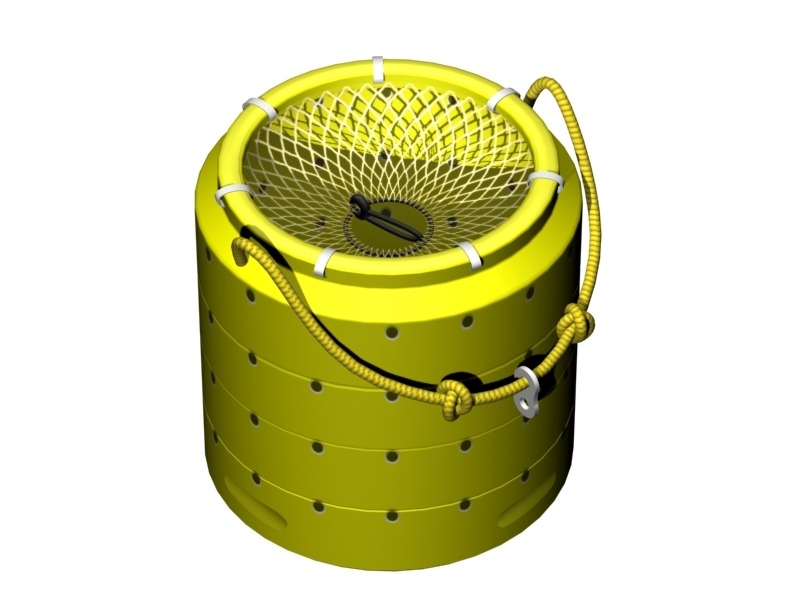Pots and Traps - Whelks
Summary
Plastic drums with a netting entrance set on the seabed for targeting whelks. Today, there tends to be one or two static gear vessels pursuing this fishery in each port around the UK.

Environmental impact
Generally environmental impact is low. A possibility of some seabed abrasion from movement of the pots on the seabed but this would be restricted to areas of strong tides or seabed turbulence in bad weather. By-catch is negligible as due to the design of the pots most other fish and shell fish can escape easily before the gear is hauled. Any unwanted bycatch can be returned to the sea alive.
Other information
In some ports in the UK a few trap fishermen have changed their efforts to target whelks using pots. The pots used for this fishery are small but heavy and often made up from discarded plastic containers, although purpose built ones, of a similar design are available nowadays. One side of the plastic container is removed and replaced with section of netting with a hole in the centre as an entrance. As with other pots this allows the whelks an easy entrance to the pot but then almost impossible to get out. The bottom of the plastic pot is weighted with a block of cement to ensure that the pot lands and remains upright on the seabed when it’s fishing. Inside there will be some method of fixing the bait and numerous holes are made around the pot to allow the water to drain from it as the pot is hauled.
Whelk pots are handled in fleets exactly the same as most other pots. Due to their relatively small size, although they do tend to be heavy, many vessels will operate fleets with greater number of traps in them. By-catch is negligible as due to the design of the pots most other fish and shell fish can escape easily before the gear is hauled. Any unwanted by-catch can be returned to the sea alive.
Gear classification
Main target species (UK)
-
- Whelks
Possible bycatch
-
- Very little bycatch